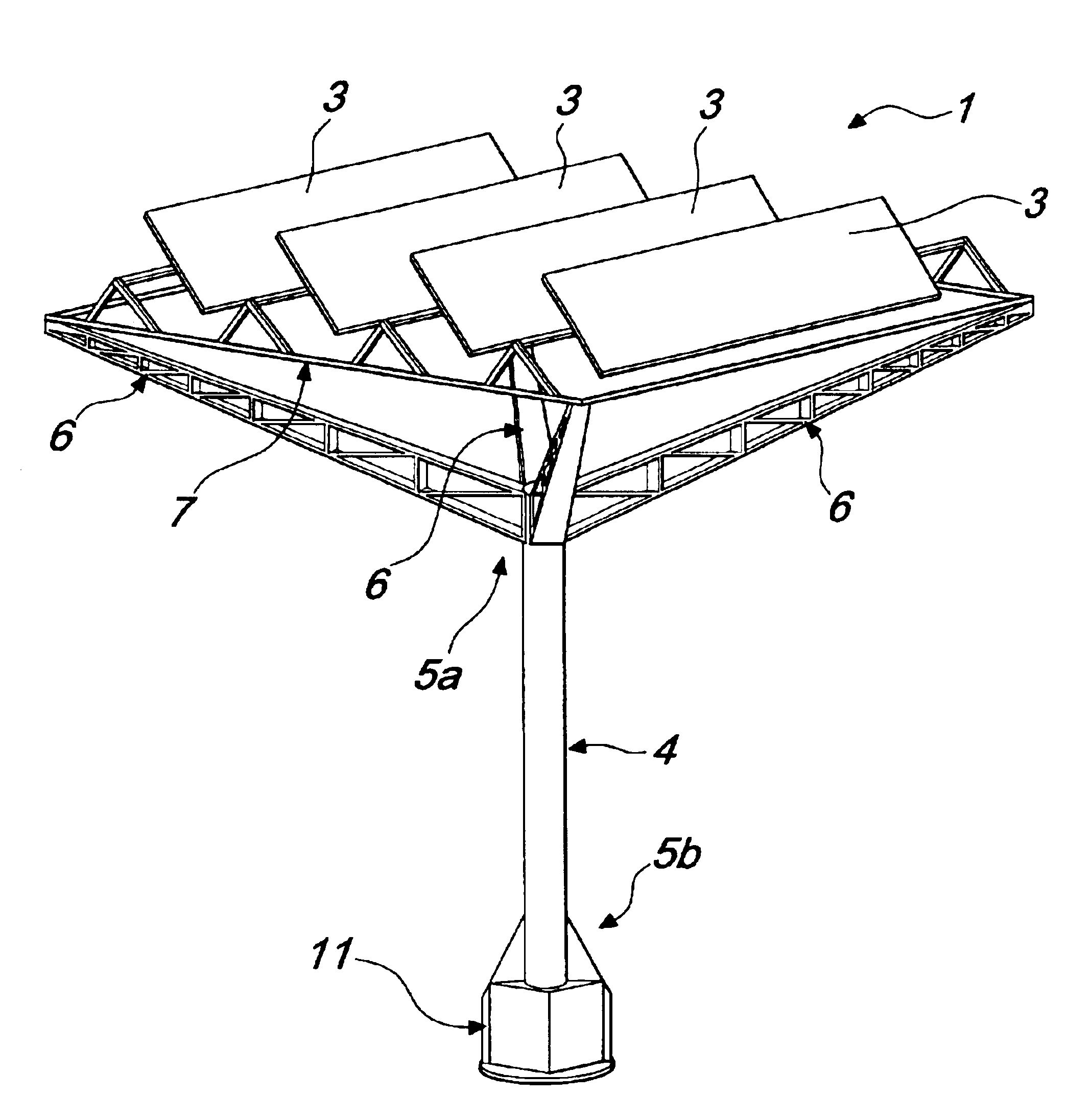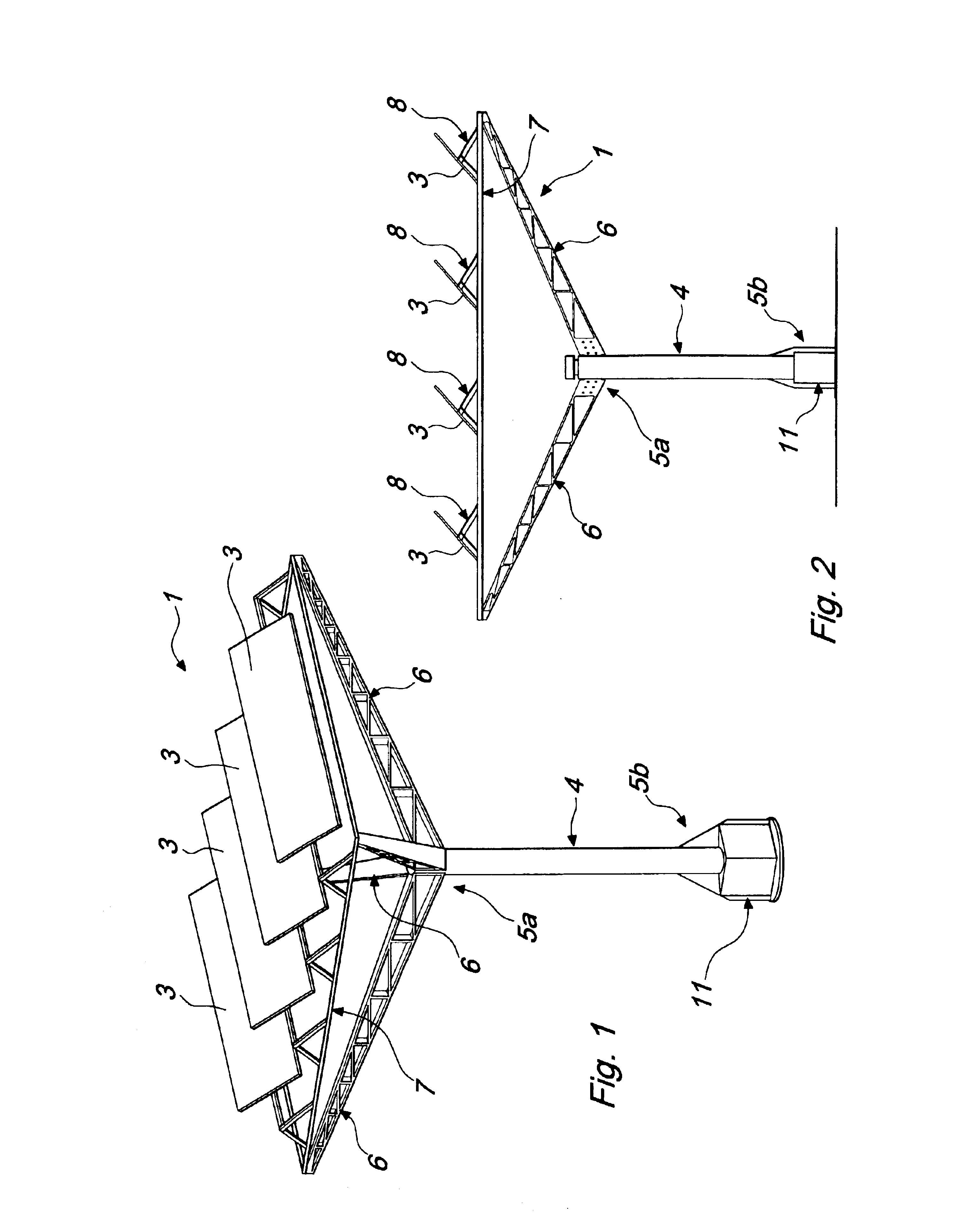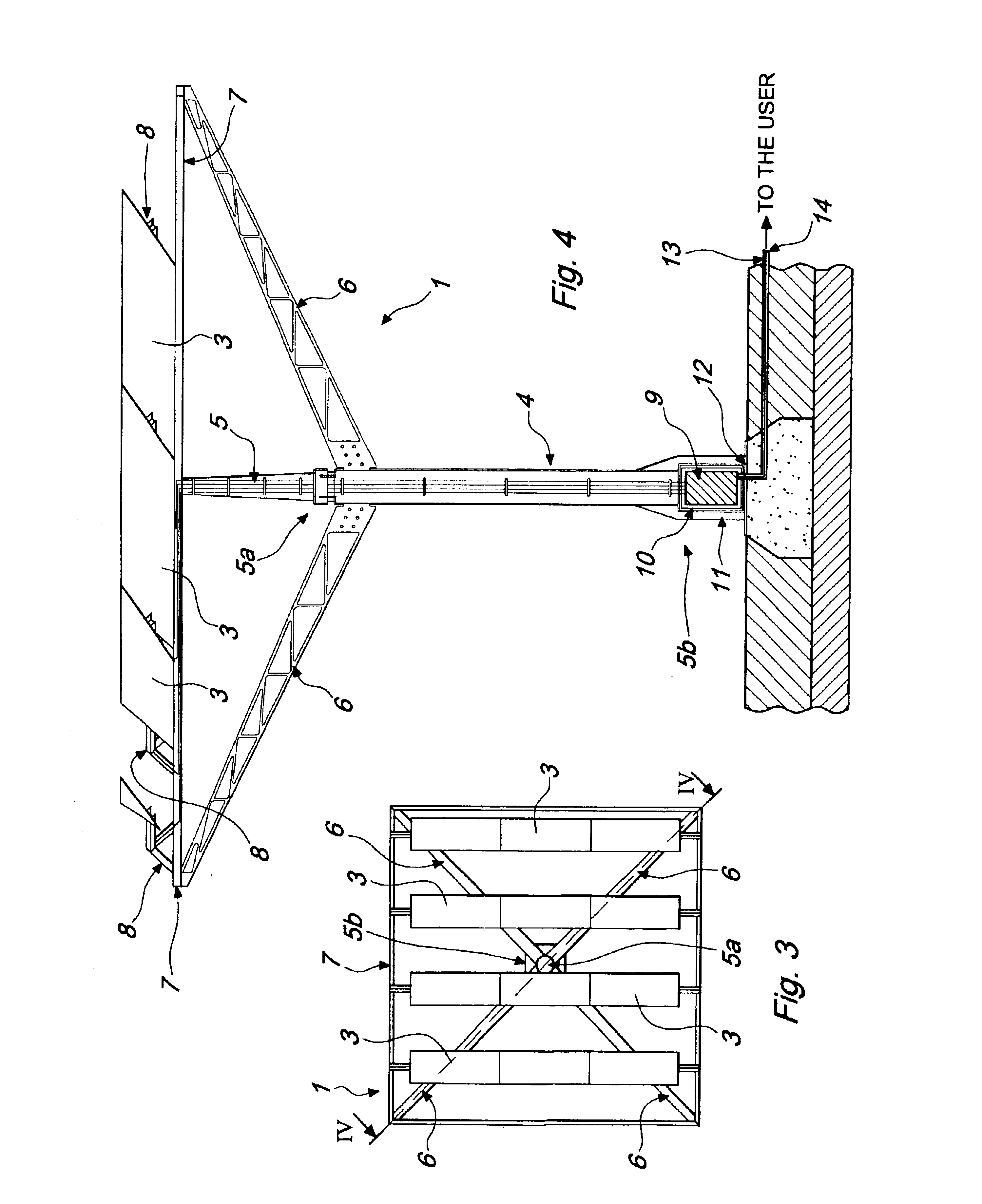Device for converting solar radiation into electric power
a technology for solar radiation and electric power, applied in the direction of photovoltaic modules or panels installed on the roofs of buildings, moving/orienting solar heat collectors, etc., can solve the problems of reducing the yield of the device, the cost of the known types of device for converting solar radiation into electric power is still rather high, and the installation of the photovoltaic module or panel on the roof cannot be performed in a manner that provides the best conditions of performan
- Summary
- Abstract
- Description
- Claims
- Application Information
AI Technical Summary
Benefits of technology
Problems solved by technology
Method used
Image
Examples
Embodiment Construction
[0034]With reference to the figures, the reference numeral 1 designates a device for converting solar radiation into electric power, comprising a plurality of photovoltaic cells, schematically designated by the reference numeral 2 in FIG. 6, which are clustered into a plurality of photovoltaic modules or panels, designated by the reference numeral 3.
[0035]The device 1 is constituted by a body 4 that is substantially vertically elongated and from which multiple arms 6 protrude approximately in the vicinity of the upper end 5a of said body 4 or thereat.
[0036]In the particular embodiment described here merely by way of example, said arms 6, which are four, protrude radially and upward from said upper end 5a so as to support a frame 7 that is advantageously square or rectangular.
[0037]Said frame 7 is advantageously formed, for example, by structural elements or tubular elements that are arranged so as to form a structure that is suitable to act as a support and resting element for said ...
PUM
 Login to View More
Login to View More Abstract
Description
Claims
Application Information
 Login to View More
Login to View More - R&D
- Intellectual Property
- Life Sciences
- Materials
- Tech Scout
- Unparalleled Data Quality
- Higher Quality Content
- 60% Fewer Hallucinations
Browse by: Latest US Patents, China's latest patents, Technical Efficacy Thesaurus, Application Domain, Technology Topic, Popular Technical Reports.
© 2025 PatSnap. All rights reserved.Legal|Privacy policy|Modern Slavery Act Transparency Statement|Sitemap|About US| Contact US: help@patsnap.com



